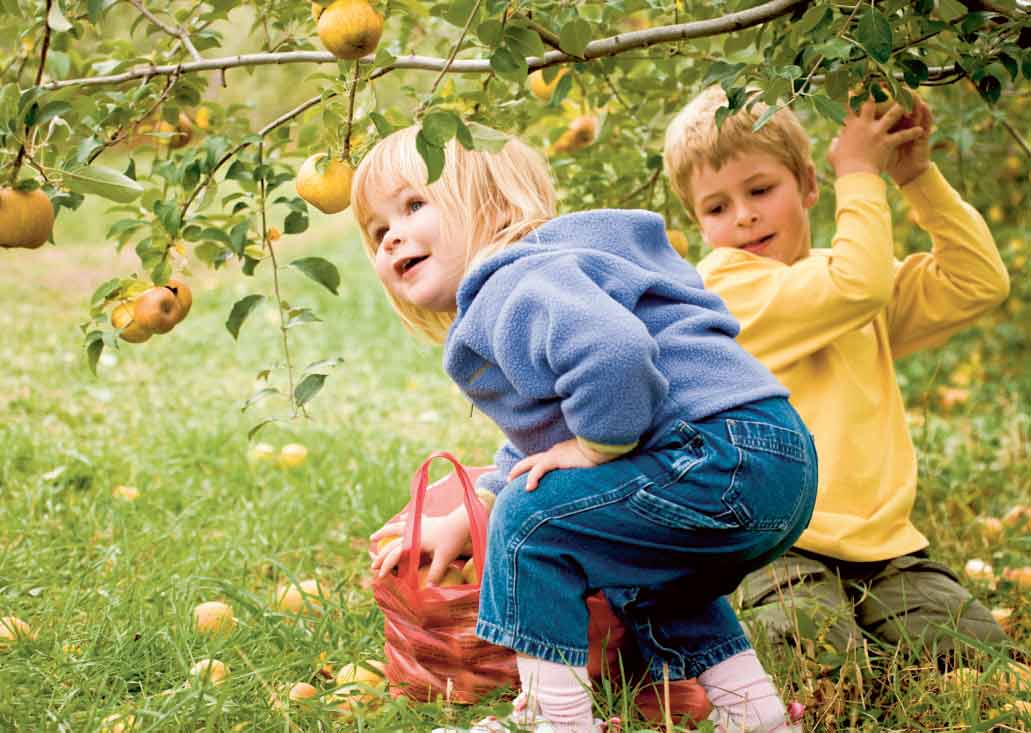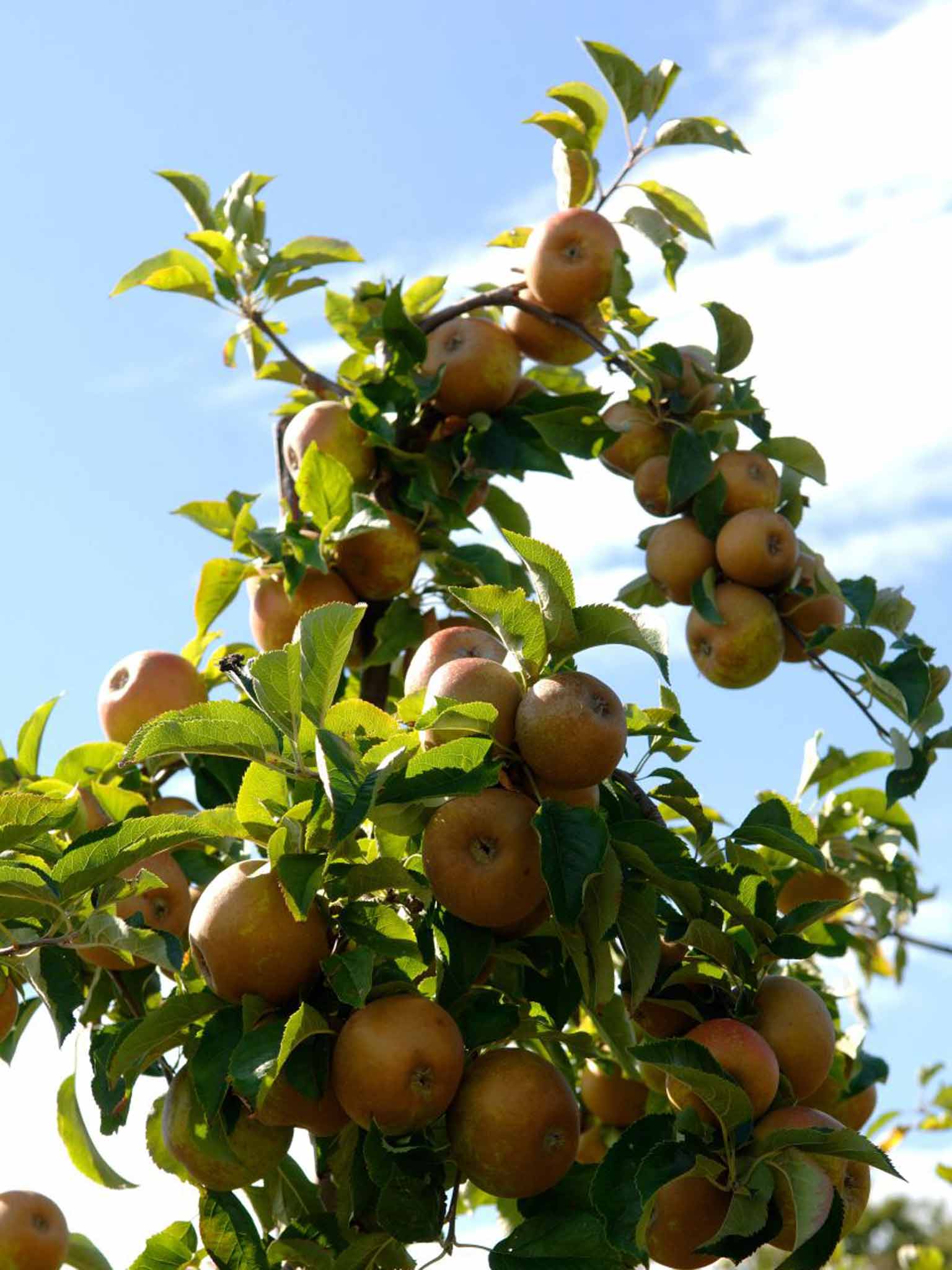Anna Pavord: English apples
English apples can be in season for seven months of the year, come in a number of tasty varieties, and can be stored after picking

Your support helps us to tell the story
From reproductive rights to climate change to Big Tech, The Independent is on the ground when the story is developing. Whether it's investigating the financials of Elon Musk's pro-Trump PAC or producing our latest documentary, 'The A Word', which shines a light on the American women fighting for reproductive rights, we know how important it is to parse out the facts from the messaging.
At such a critical moment in US history, we need reporters on the ground. Your donation allows us to keep sending journalists to speak to both sides of the story.
The Independent is trusted by Americans across the entire political spectrum. And unlike many other quality news outlets, we choose not to lock Americans out of our reporting and analysis with paywalls. We believe quality journalism should be available to everyone, paid for by those who can afford it.
Your support makes all the difference.Top job for the month: Pick apples and pears
Some early varieties of apple, such as 'Beauty of Bath' and 'George Cave', can be picked and eaten straight from the tree. In our old garden, I planted 'George Cave', so the children could help themselves to fruit whenever they wanted. It is a pretty apple, flushed and striped with red, which has been around since the 1920s, when Mr Cave of Dovercourt in Essex first introduced it to the market. In the past, growers took immense pains to select and breed varieties to give as long a season of use as possible. 'George Cave' was ready in August. Then you might turn to 'James Grieve' or 'Ellison's Orange', a fantastic apple that filled the bomb shelter my father converted into an apple store with its distinctive aniseed scent. It's one of my favourite apples, raised in Lincolnshire around 1904.
Ripening this month, and keeping till November or December, is 'Egremont Russet', probably raised on the Petworth estate in Sussex. All the russets have great flavour, but this one is particularly good – smoky, nutty, quite unlike anything else. Following on are pippins, such as the 'Ribston Pippin', which ripens next month and can be stored through till January or February. The fact that it kept for such a long time in good condition must have been one of the reasons it never fell out of favour. It's an old apple, raised around 1707 from a pip brought by Sir Henry Goodricke from Rouen to Ribston Hall, near Knaresborough in Yorkshire.
Even later are varieties such as 'Orleans Reinette' and 'Claygate Pearmain', which do not ripen until December and can be kept, if you've a cool enough place, right through till February or early March. So, given the fact that English apples can be in season for seven months of the year, it's idiotic that during this time apples are still flown in to our shops from abroad. It's one fruit that grows rather well in the UK and, in our climate, develops superb flavour. But since we joined the European Union, the area in Britain covered by apple orchards has dropped by 70 per cent and the shops are filled with French fruit.

Commercial growers use controlled-atmosphere stores to slow down the rate at which apples produce ethylene. For the rest of us, the ideal store is one free from frost (and mice) with a temperature around 3-5C. In practice, it's almost impossible to find a place as cool as this. Aim for a steady 8C. Pick apples when the stalks part easily from the branches. If you've got a shed with slatted shelves, lay the apples out there. Otherwise, store them in wooden boxes or pack them in polythene bags that can hold 2-3kg of fruit. Tie the bags loosely and punch holes in them so air can circulate round the fruit.
Apples laid out on shelves or in boxes store slightly better if they are individually wrapped, but you need to measure that potential gain against the time it will take you to do the wrapping. Keep fruit away from strong-smelling things such as onions or paint, which may taint the flavour.
Pears are trickier to store. Trickier all round, as in their hearts they want to be somewhere warmer, more > comforting than Britain. I think of them as French fruit and most of the best-tasting pears have French names – 'Comice', 'Beurre Hardy', 'Doyenne d'Ete', 'Fondante d'Automne'. Unlike the early varieties of apple, they do not ripen on the tree. Even 'Jargonelle', which, in the orchard we planted when we came to the new garden, was ready to pick in early September, needs a week or 10 days inside to ripen.
For storage beyond a week or so, you need to remember that the lower the temperature, the longer pears will keep without developing that mushy centre which is their most irritating trait. Don't wrap the fruit, as you'll need to pick them over much more frequently than apples. And don't put them in polythene bags as this will encourage them to rot even more quickly. If you can, store them at 0-1C and bring just a few at a time into room temperature to finish ripening.
FIND TIME TO
Plant spring bedding plants such as wallflowers, forget-me-nots, double daisies and polyanthus. 'Bedding' might seem an old-fashioned concept, but it's cheering to have something other than pigeon-splattered compost to look at in a window box. Forget-me-nots make a perfect understorey for short, early-flowering tulips such as lemon-coloured T. kaufmanniana or elegant pink 'Gluck'. Among polyanthus, look for the gold-laced ones, with dark red flowers finely edged in deep yellow. For scent, go for wallflowers, though they will be later to bloom than the forget-me-nots or polyanthus.
Protect dahlias either by mulching or lifting. Either way, you'll need to cut down the stems when they've been blackened by the first frosts. But if you are lifting, leave the job as long as the season allows, because tubers do most of their growing in the short days of autumn. Trim the cut stems down to about 10cm/4in and stack the tubers upside down in boxes to dry out. Then store them in a frost-free shed. We grew them for 30 years in the old garden (it's such a relief not to have them any more) and during all that time, left them in the ground over winter, under a thick blanket of fallen leaves. But in the chillier north, they might not be so accommodating.
THINK ABOUT
Taking cuttings, particularly of tender plants such as pelargoniums, argyranthemums and osteospermums. You need much less space to overwinter a potful of cuttings than you do a mature plant, even if it is cut back. Look for fresh, non-flowering shoots breaking from the stems and tear them off. Strip off the lowest leaves and stick the cuttings round the edge of a pot of compost. They root very easily and quickly. And they will save you the expense of buying fresh plants next season.
TO SEE
The autumn plant fair at Great Dixter, Northiam, Rye, East Sussex TN31 6PH, has become a fixture in many gardeners' diaries. It's a wonderful time to see the garden, still blazing with yellow daisies and outrageous zinnias, but visitors also have the chance to buy plants from some of the best nurseries in Europe. This year, the fair is being held today and tomorrow (11am-4pm), admission £8. For more information, go to greatdixter.co.uk
Join our commenting forum
Join thought-provoking conversations, follow other Independent readers and see their replies
Comments